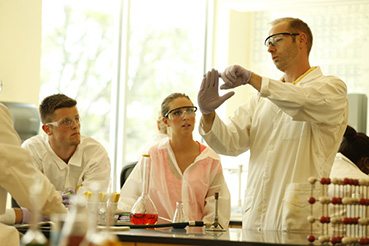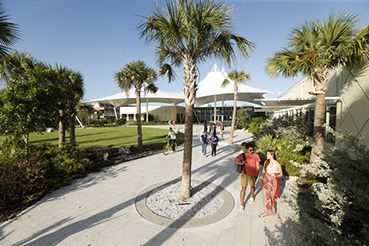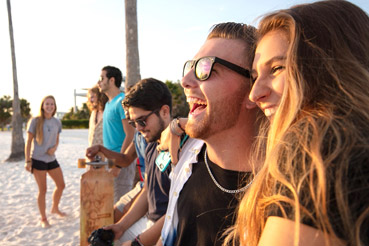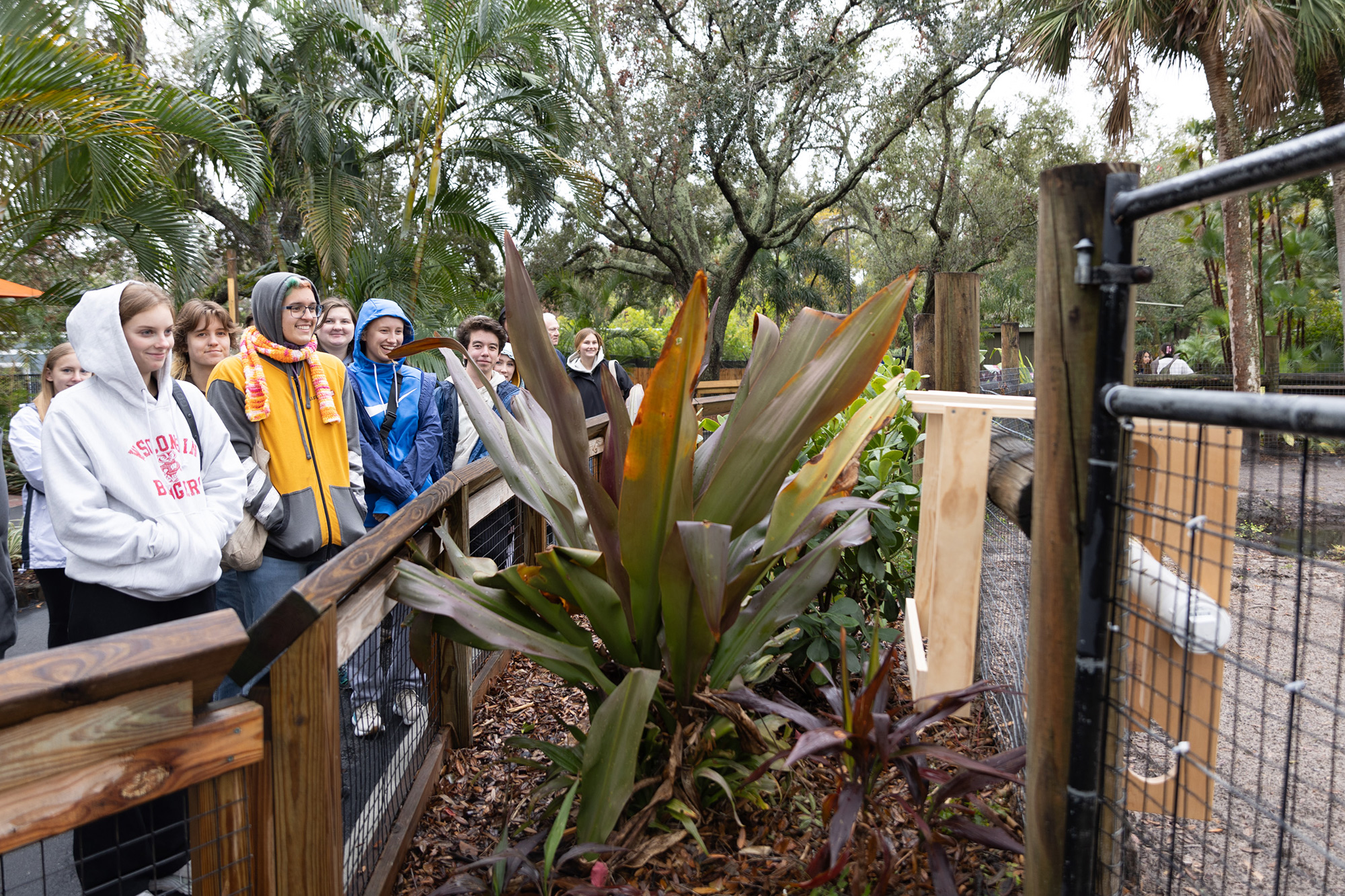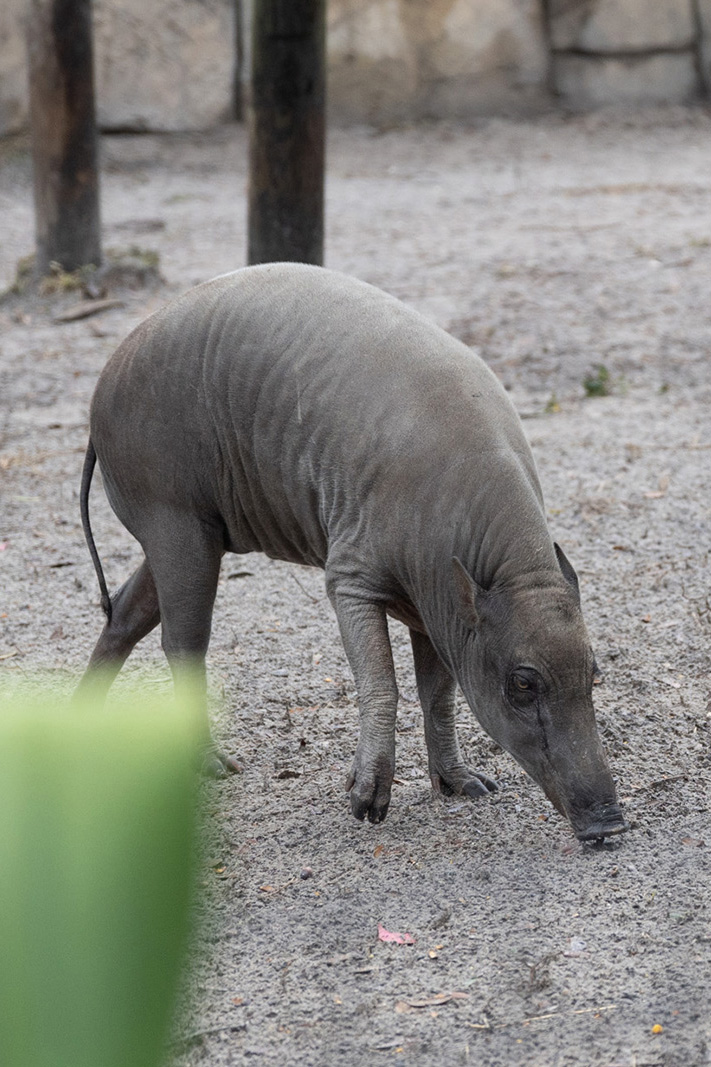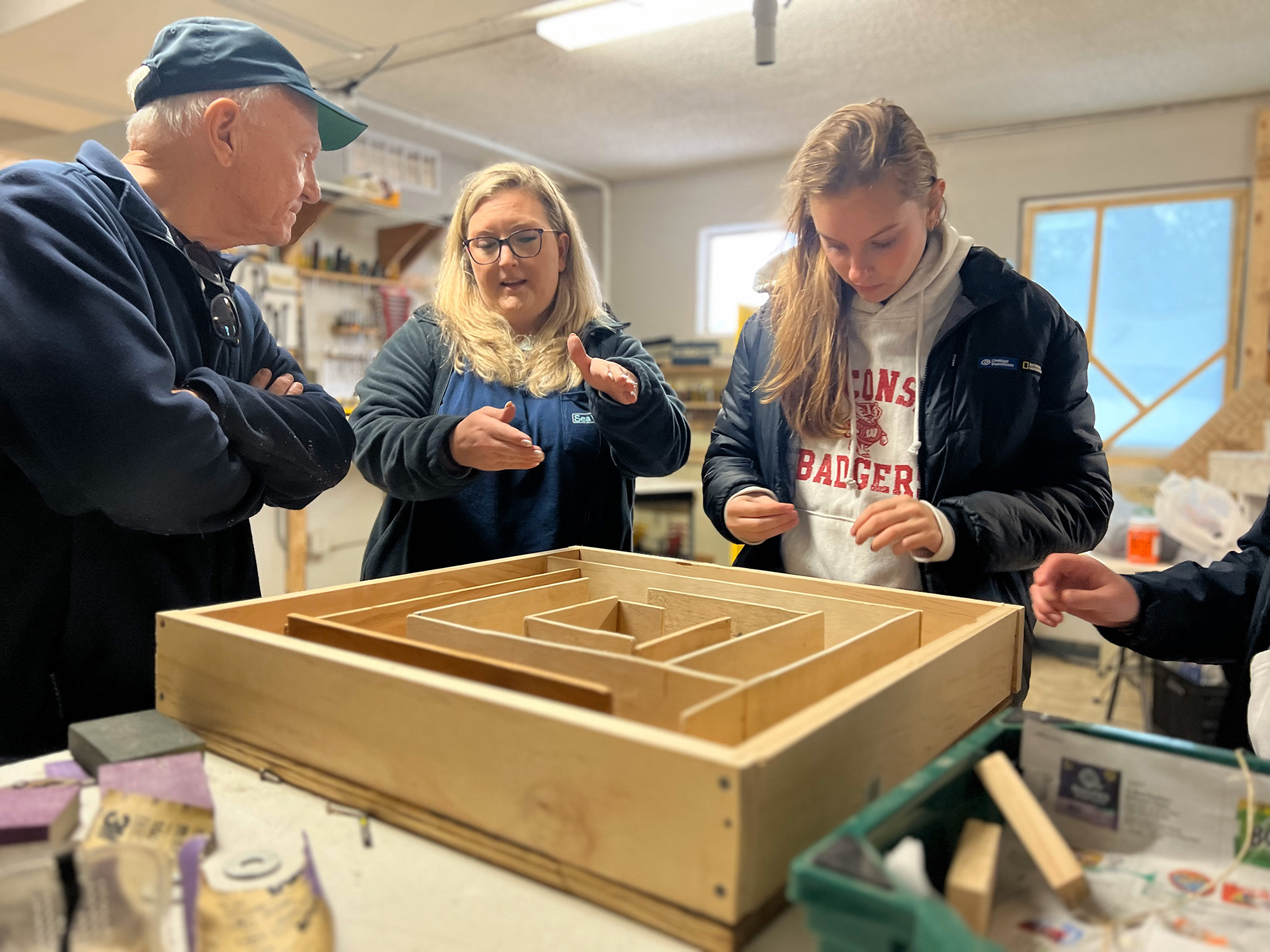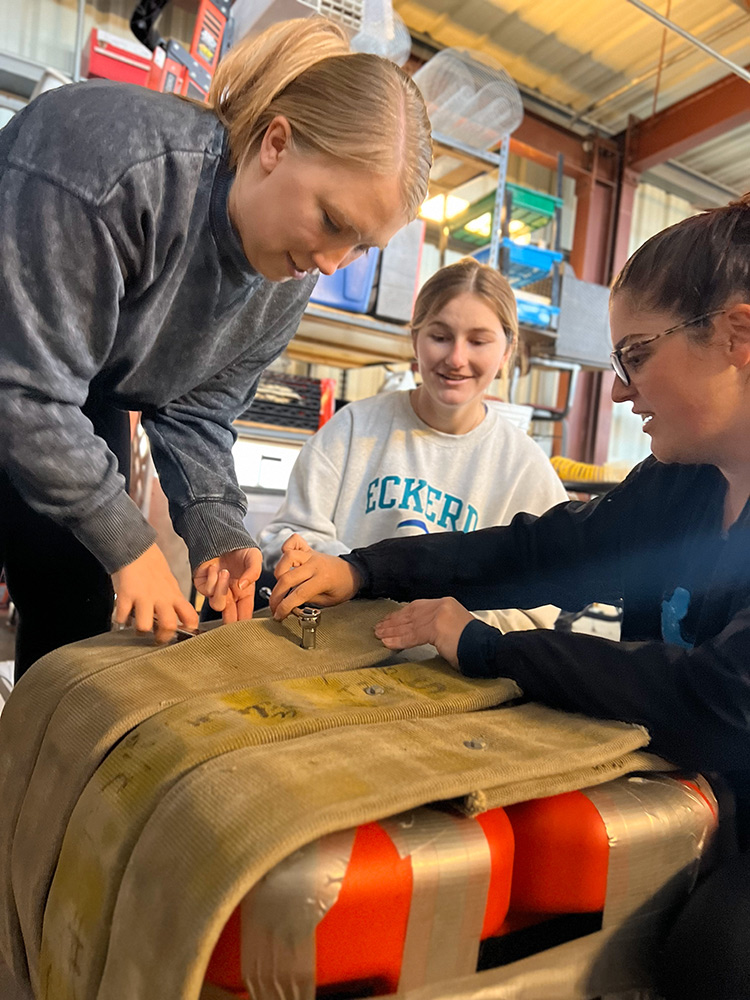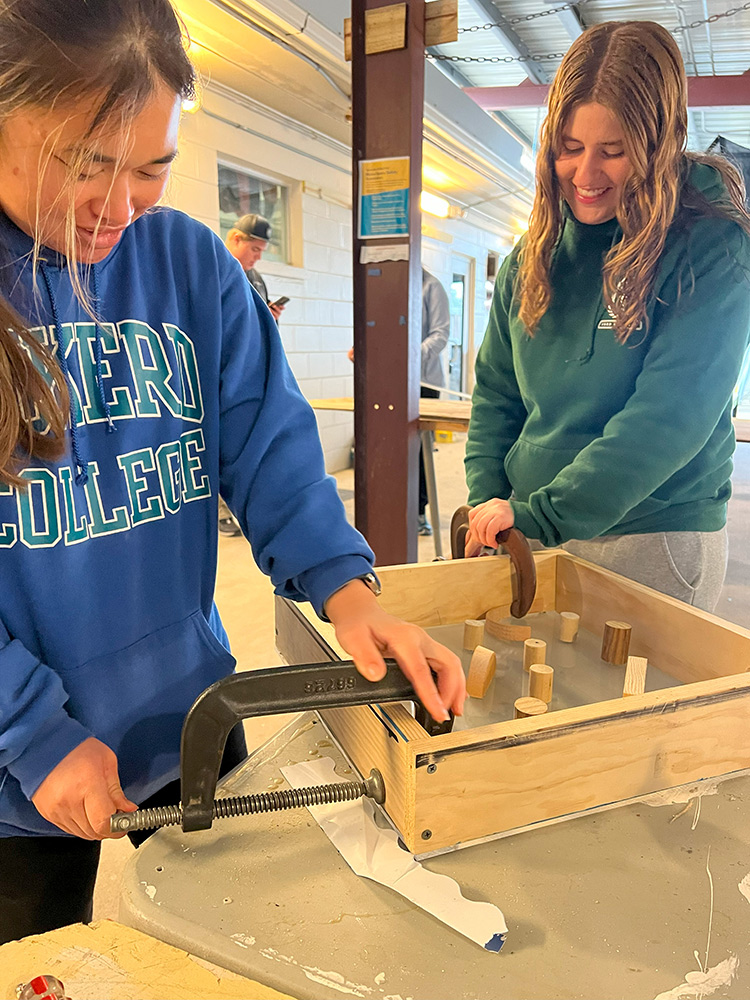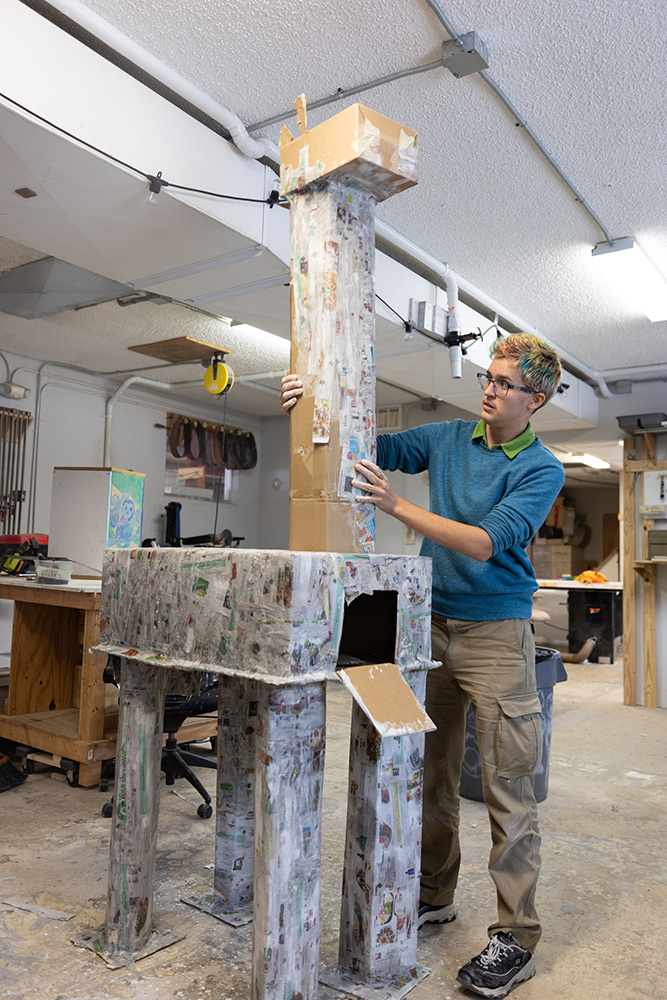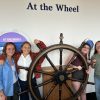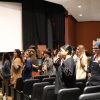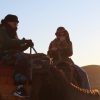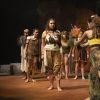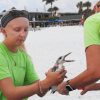With the temperature stuck around 38 degrees, Myrtle the babirusa reluctantly emerged from her barn and began to forage in her habitat at ZooTampa at Lowry Park. A threatened species also known as a deer-pig, the babirusa is a member of the swine family and native to several decidedly warmer Indonesian islands.
Gathered around Myrtle’s habitat that chilly January morning were 21 Eckerd College students from Assistant Professor of Animal Studies Erin Frick’s “Animal Enrichment” 2025 Winter Term class.
The students couldn’t do anything about the cold, but they could try to make Myrtle’s life more interesting.
Frick, who holds a Ph.D. in experimental psychology, and her students had brought to Myrtle’s pen a ladder feeder they had built on the Eckerd campus. The goal was to provide mental stimulation for Myrtle and her companions by giving them a unique puzzle to solve. Insects and leaves were scattered on the ground, but Myrtle could get pellets if she used her snout to move a PVC pipe up and down the ladder structure.
That’s important, Frick explains, because enrichment is a key part of modern zoo and animal management. The aim is to keep the animals’ environment dynamic and engaging.
And that takes work. After researching an animal’s natural habitat and behavior, the students designed and built enrichment devices inside the EC MakerSpace—a club workshop on Eckerd’s campus devoted to creating, engineering and building. Each day, the students were joined by Academy of Senior Professionals at Eckerd College members Dave Duane and Tom Handcock, who taught the students the finer points of using circular saws, jigsaws, drills and other power tools.
Tori Roeder is a senior animal care professional at ZooTampa, a 56-acre nonprofit zoo operated by the Lowry Park Zoological Society and visited by more than a million people every year. “The animals benefit because it gives them the opportunity to practice their natural behavior, behavior they would be doing in the wild,” Roeder explains. “Most animals have to problem-solve to get their food in the wild, and all the devices the students made are encouraging the animals to use the behaviors and skills they would normally use.
“It also gives the students a practical application of what they’re learning. And that’s really valuable because it gives them reinforcement for the work they’ve done and an opportunity to learn about what it means to care for the animals. I’m a 2018 graduate of The Ohio State University with a degree in zoology, and for me, it’s really rewarding to watch these students because I’ve been in their shoes.
“This [the animal enrichment partnership with Eckerd] is not a very common program,” Roeder adds. “It’s not something that happens at a lot of places.”
On the final day of Winter Term, Frick and her students traveled to Elmira’s Wildlife Sanctuary in Wimauma to set up more devices. A nonprofit facility staffed entirely by volunteers, the sanctuary is home to dozens of exotic animals including tigers, a leopard, tropical birds, a grizzly bear and several wolf hybrids—wolves that have been bred with dogs.
Among the devices students had designed and built were a fire-hose-covered floating box for the bear, papier-mâché giraffes and goats that had food inside for the leopard and tigers, and a tug-of-war feeder for the wolf hybrids. They all were a huge success.
“It was incredibly rewarding to see what we made in class being used by the animals, and to see firsthand how important enrichment is in their lives,” says Ansley Bossart, a senior animal studies student from Milton, Georgia. “And I got to work with my hands and do a lot of problem-solving.”
Ansley even returned to the MakerSpace after Winter Term ended to make a maze-like enrichment device for her pet snake, a 13-year-old ball python named Sammy. She says she intends to pursue a career in animal care, either as a zookeeper or trainer.
Frick had offered the class for the first time last year, and because it was so popular, she taught it again this January. As for next year? “It is definitely a course I want to continue to offer regularly,” she answers. “It’s fun for the students, it’s fun for me, and most of the animals went right for the devices—so you could tell they enjoyed it.”
Lara Eade, a senior animal studies student from Sykesville, Maryland, works as a behavioral research volunteer at ZooTampa. “The class gave me a new perspective on how the process works,” she says, “how you have to thoroughly research each animal and learn their individual behaviors and needs before you start to build an enrichment device. Zookeepers have a lot on their plate and don’t always have free time to work on these larger enrichment builds, so it’s really rewarding to be able to help out a bit.”
As for what will happen with Myrtle and her ladder feeder, Lara says there’s no wrong answer. “Just because we introduce an enrichment device doesn’t mean they have to interact with it,” she explains. “It’s up to the animal to choose. We want them to engage with the device, but just having it as an option is still beneficial.”


